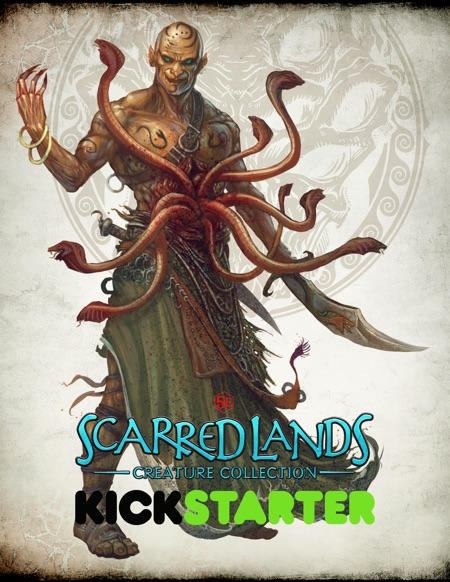Alzrius
The EN World kitten
So I recently picked up a used copy of the 2004 Scarred Lands d20 sourcebook Edge of Infinity: The Scarred Planes from Sword & Sorcery Studios, and I'm a tad bit underwhelmed.
I suspect that this is an issue of mismatched expectations on my part. The Scarred Lands setting was never really "grimdark" per se, being more like a "metal"-type setting (to use some ill-defined genre references). Even so, I found myself expecting their cosmology to be a bit more radical than it was; like, when you have planes named "The Adamantine Heaven" and "The Apocalypse Abyss," I kind of expect that they'll be something like a Doom game on steroids. Like, really out there in terms of epic clashes between primordial good and evil, without any limits based on design ideas of "ordinary mortals need to be able to live here," you know?
Instead, what we got was basically the standard D&D cosmology all over again. There are aligned planes where the gods live, a set of elemental planes alongside a plane of positive energy and a plane of negative energy. There's an Astral Plane, and Ethereal Plane, a Shadow Plane, and even a Plane of Dreams. The biggest departure was the "zodiacal planes," each of which housed a being from the zodiac, but they felt more like an addendum than anything else.
And to be clear, nothing here was bad per se. There were a lot of minor and modest changes to the basic planar structure that I think a lot of groups would like, such as the Negative Energy Plane (which like all of the planes had a new name here: The Eternal Void) being an eerily silent wasteland, with a plethora of landscapes that were all still and unoccupied (and where corporeal undead were incorporeal, and incorporeal undead were corporeal). Little things like that are cool, but "cool" wasn't what I was expecting.
Also, I've come to realize that having a single world's issues be central to the entire arrangement of the cosmos feels (for lack of a better term) "small" to me. I like planes that have numerous gods and pantheons, all jockeying and politically vying with each other, largely because I see those as creating opportunities for higher-level play when the PCs have started to have influence (and power) beyond what the average mortal (or even mortal hero) can contend with. This setting, however, has only the gods of Scarn and the titans that they fought (well, and the powers behind the Slarecians, but that's a separate sourcebook), and everything comes back to them.
While I can appreciate those who find that helpful in making the gods have more grandeur, placing them far above and beyond even epic heroes, that's not to my taste, and so I didn't enjoy this book as much as I thought I was going to.
I suspect that this is an issue of mismatched expectations on my part. The Scarred Lands setting was never really "grimdark" per se, being more like a "metal"-type setting (to use some ill-defined genre references). Even so, I found myself expecting their cosmology to be a bit more radical than it was; like, when you have planes named "The Adamantine Heaven" and "The Apocalypse Abyss," I kind of expect that they'll be something like a Doom game on steroids. Like, really out there in terms of epic clashes between primordial good and evil, without any limits based on design ideas of "ordinary mortals need to be able to live here," you know?
Instead, what we got was basically the standard D&D cosmology all over again. There are aligned planes where the gods live, a set of elemental planes alongside a plane of positive energy and a plane of negative energy. There's an Astral Plane, and Ethereal Plane, a Shadow Plane, and even a Plane of Dreams. The biggest departure was the "zodiacal planes," each of which housed a being from the zodiac, but they felt more like an addendum than anything else.
And to be clear, nothing here was bad per se. There were a lot of minor and modest changes to the basic planar structure that I think a lot of groups would like, such as the Negative Energy Plane (which like all of the planes had a new name here: The Eternal Void) being an eerily silent wasteland, with a plethora of landscapes that were all still and unoccupied (and where corporeal undead were incorporeal, and incorporeal undead were corporeal). Little things like that are cool, but "cool" wasn't what I was expecting.
Also, I've come to realize that having a single world's issues be central to the entire arrangement of the cosmos feels (for lack of a better term) "small" to me. I like planes that have numerous gods and pantheons, all jockeying and politically vying with each other, largely because I see those as creating opportunities for higher-level play when the PCs have started to have influence (and power) beyond what the average mortal (or even mortal hero) can contend with. This setting, however, has only the gods of Scarn and the titans that they fought (well, and the powers behind the Slarecians, but that's a separate sourcebook), and everything comes back to them.
While I can appreciate those who find that helpful in making the gods have more grandeur, placing them far above and beyond even epic heroes, that's not to my taste, and so I didn't enjoy this book as much as I thought I was going to.




